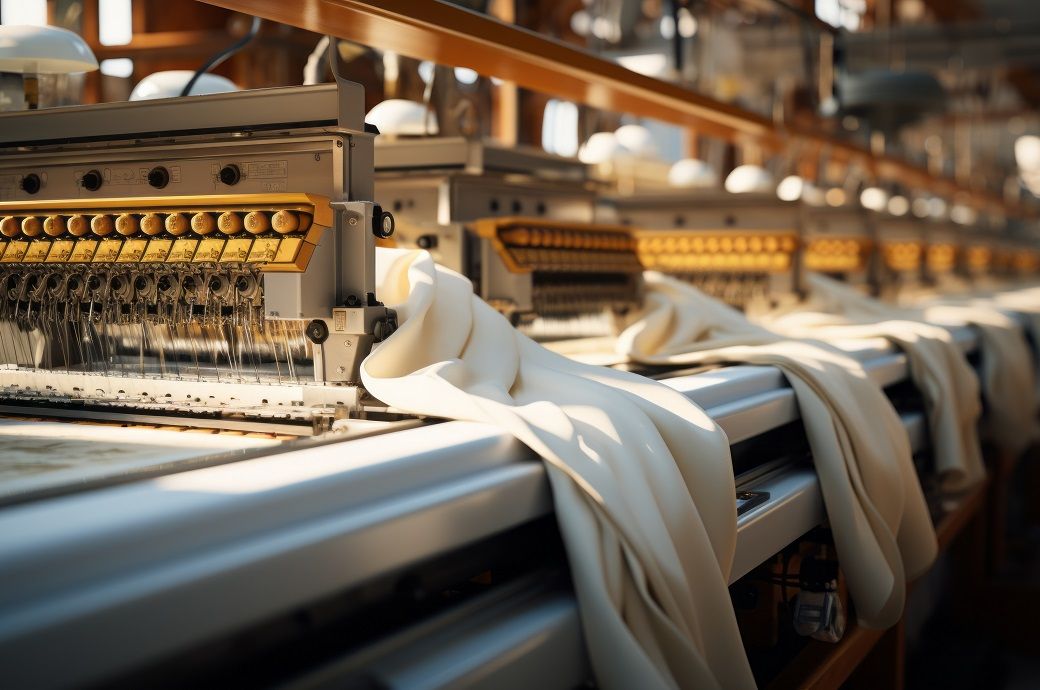
Although output, new orders and employment all continued to contract, the rates of decline eased across all three metrics. Business optimism improved in tandem, reaching a four-month high.
Although four out of the five PMI constituents were at levels consistent with a deterioration in operating performance (output, new orders, employment and stocks of purchases) rates of contraction eased in each case. Vendor lead times lengthened for the eighteenth month in a row, but to the least extent since March.
UK manufacturing showed signs of stabilisation in June as the S&P Global PMI rose to 47.7, its highest in five months.
Although output, orders, and jobs continued to decline, contraction rates eased.
Business optimism hit a four-month high, driven by hopes of recovery.
Input and selling price inflation softened, but concerns over tariffs, and weak global demand continue to cloud the outlook.
June data signalled a decrease in manufacturing production for the eighth consecutive month. Companies scaled down output in response to weak market conditions, clients offsetting higher costs through reduced demand and uncertainty surrounding government policy, tariffs and the general economic/geopolitical situation.
New order intakes also decreased for similar reasons, although the rate of contraction was the weakest during the current nine-month sequence of decline. Lower total new order inflows reflected weaker intakes from both domestic and overseas clients. New export business fell for the forty-first month in a row amid reports of reduced demand from the US, Europe and China. Some manufacturers added that tariff uncertainty impacted both overseas demand and client confidence.
The end of the second quarter also provided evidence of manufacturers’ outlook strengthening. Production is expected to be higher in one year’s time by 46 per cent of companies (compared to only 10 per cent forecasting a decline) linked to hopes for a sales recovery, new product launches, efforts to move into new markets, investment spending, organic growth opportunities, planned business expansions and diversifications, S&P Global said in a press release.
The cyclically sensitive new orders-to-finished goods ratio also rose sharply to its highest level since August 2024. Companies remained concerned that government policy, tariff uncertainty and heightened geopolitical tensions could derail any moves towards greater market stabilisation. Job cuts at manufacturers were reported for the eighth consecutive month in June.
Losses were seen across all product categories (consumer, intermediate and investment goods) and company size definitions (small, medium and large) covered by the survey. The steepest job cuts were seen at large-scale producers.
Manufacturing employment was also lowered to reduce excess capacity at factories. Backlogs of work decreased for the thirty-eighth month in a row, with the rate of contraction remaining substantial. Stock holdings were also streamlined in June, leading to reductions in both purchased and finished goods inventories. In both cases, lower warehouse stocks reflected lower production/demand requirements, cost and stock minimisation programmes, better inventory management/rotation and efforts to improve cash flow.
The average input costs rose for the eighteenth consecutive month in June. Higher input prices were linked to supplier price rises (often to offset increased labour costs), general inflationary pressures, shipping disruption and heightened geopolitical tensions.
“Although the downturn in UK manufacturing continued in June, the latest PMI survey provides signs of conditions stabilising. Production, new orders and employment all fell at slower rates, while business optimism picked up to a four-month high. The orders-to-inventory ratio, a reliable bellwether of future production trends, also climbed sharply to its highest since August 2024. Inflation of both input costs and selling prices meanwhile nudged lower to hint at a softening inflation trend,” said Rob Dobson, director at S&P Global Market Intelligence.
“That said, any hoped-for stabilisation remains fragile and subject to potential headwinds that could severely impact demand, supply chain reliability and future growth prospects, as manufacturers continue to caution their optimism with concerns about heightened geopolitical tensions, weak global markets, tariff uncertainties and fears over the direction of future government policy,” added Dobson.
Fibre2Fashion News Desk (SG)


:max_bytes(150000):strip_icc()/Health-GettyImages-172129615-18289af9ba534d7fa33fa5ebb5fa4224.jpg)

